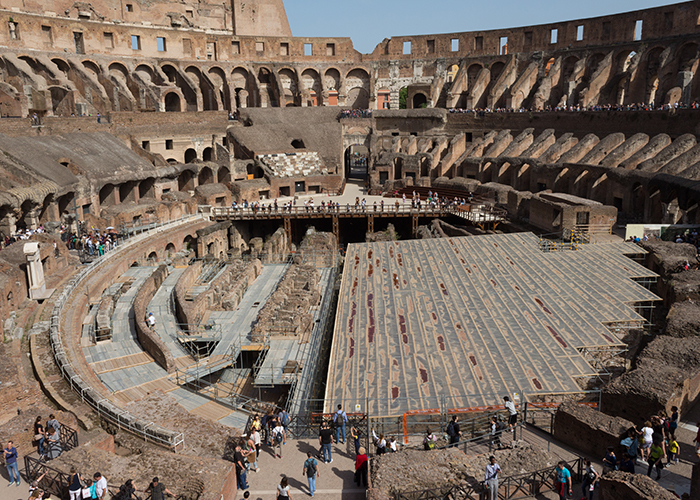 More 2019 Adventures |
Fiumicino → Rome → Fiumicino 39.5 mi (63.6 km) |
 Next Day |
Salvete, omnes!
After twelve hours on Alitalia Flight 621, alternating between sleep and red-eyed mahjong, I’ve stuck my feet in a colossal boot! Yes, folks, I’m visiting the country with the most UNESCO World Heritage Sites in the whole world (54), the place that gave us pizza, espresso, and a complex system of paved roads! It’s Italy, and it’s where my quest to see the Seven Wonders of the World continues!
After landing in Rome at 12:30 and waiting for the car rental lady to finish kissing her coworkers on the cheek one by one, I hustled into the Eternal City for a 3:00 tour of the Flavian Amphitheatre, known today as the Colosseum!
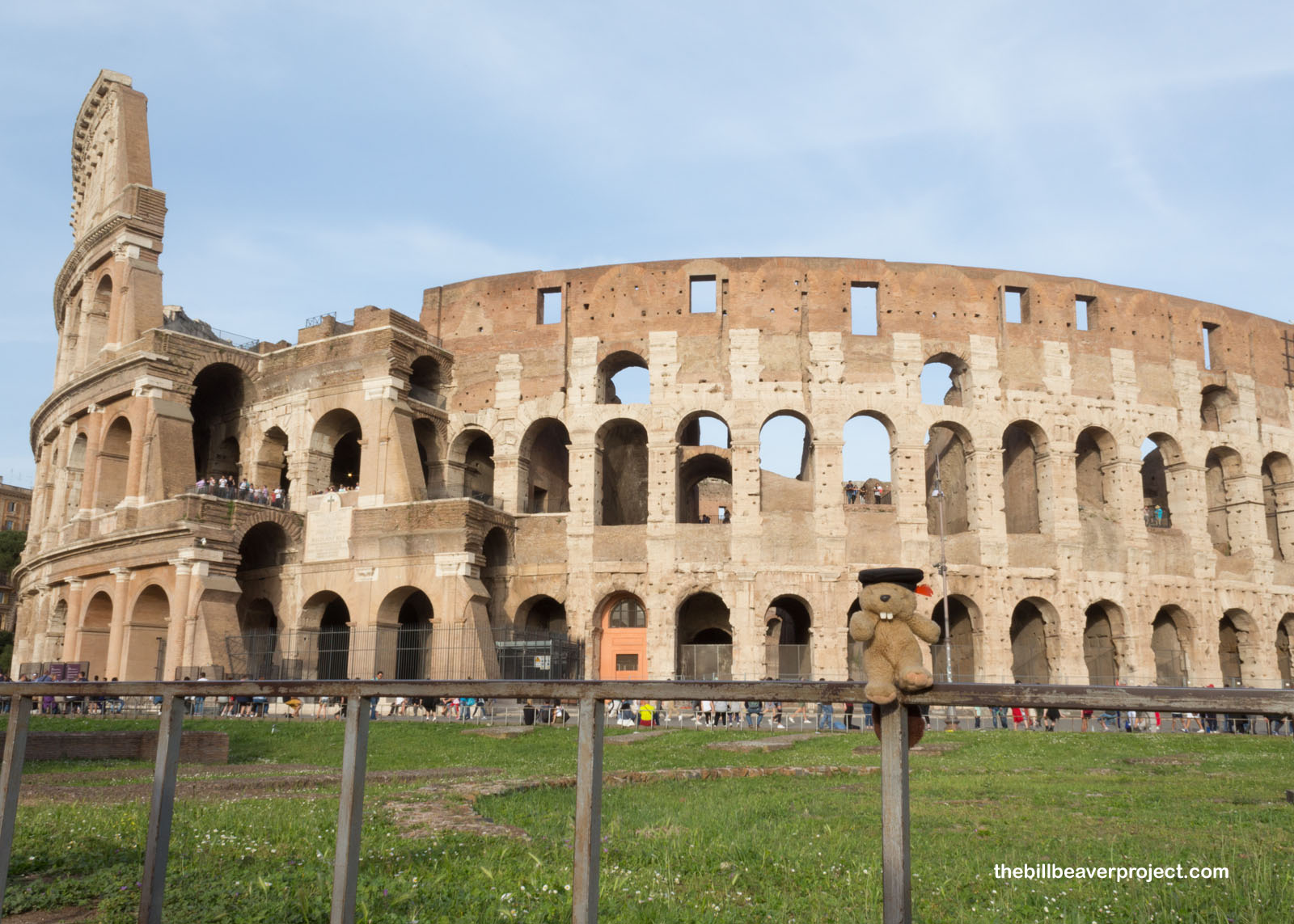 |
Originally known as the Flavian Amphitheatre, this huge travertine and concrete amphitheater was the Emperor Vespasian’s apology to the Roman people for the terrible rule of his predecessor, Nero! Using the riches and slaves he’d plundered from Jerusalem in AD 70, Vespasian flattened Nero’s palace and spent eight years constructing a public entertainment center that opened for battle in 80 AD!
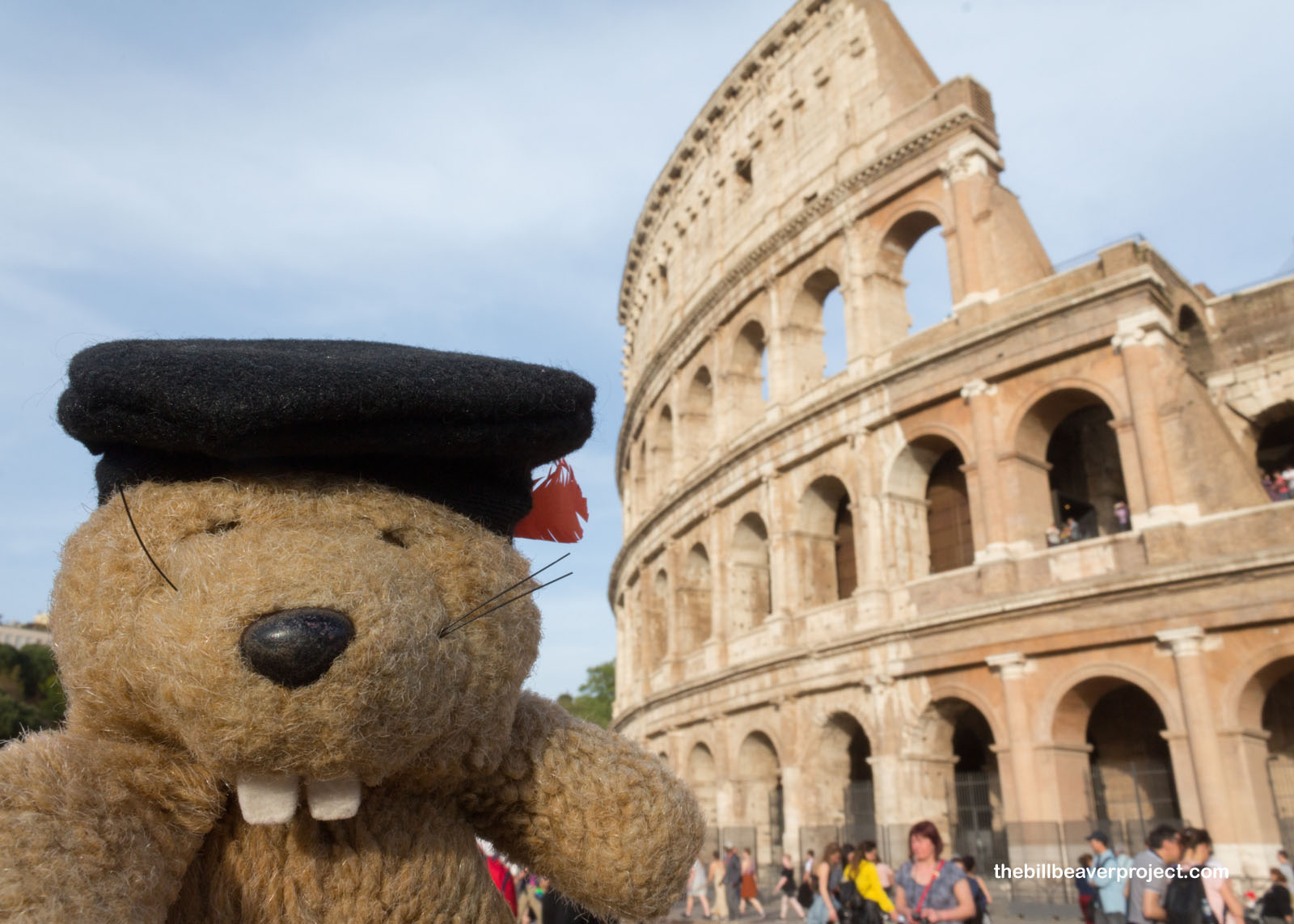 |
To get access to this amazing construction, I joined a Skip the Line tour led by Ursus, whose name was Latin for “bear,” and got right inside the amphitheater! Though much of the Colosseum had been plundered for use building other structures, like St. Peter’s Basilica, Ursus showed us traces of the white marble that once covered the floors, paintings that had once colored the ceilings, and the holes in the walls where the blocks had been lifted on top of each other, much like at Angkor Wat!
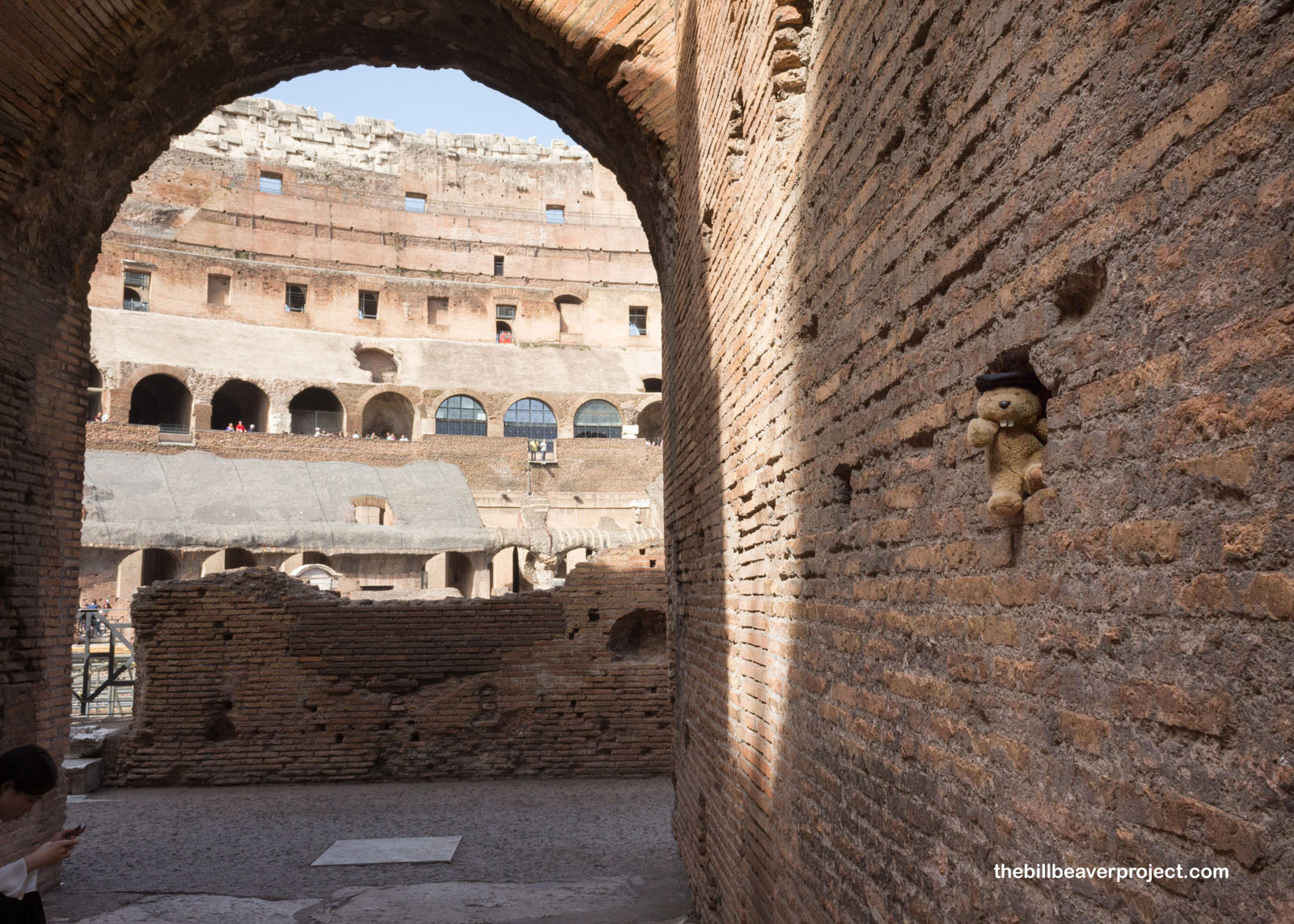 |
We hiked up some stairs for an overview of the main amphitheater, which could hold 45,000 seated spectators and 5,000 standing! Though the last gladiators battled here in 404 AD, today, there was still plenty of battling among the throngs of visitors looking for that perfect photo of the amphitheater. Luckily, there was no blood this time, at least none that I could see.
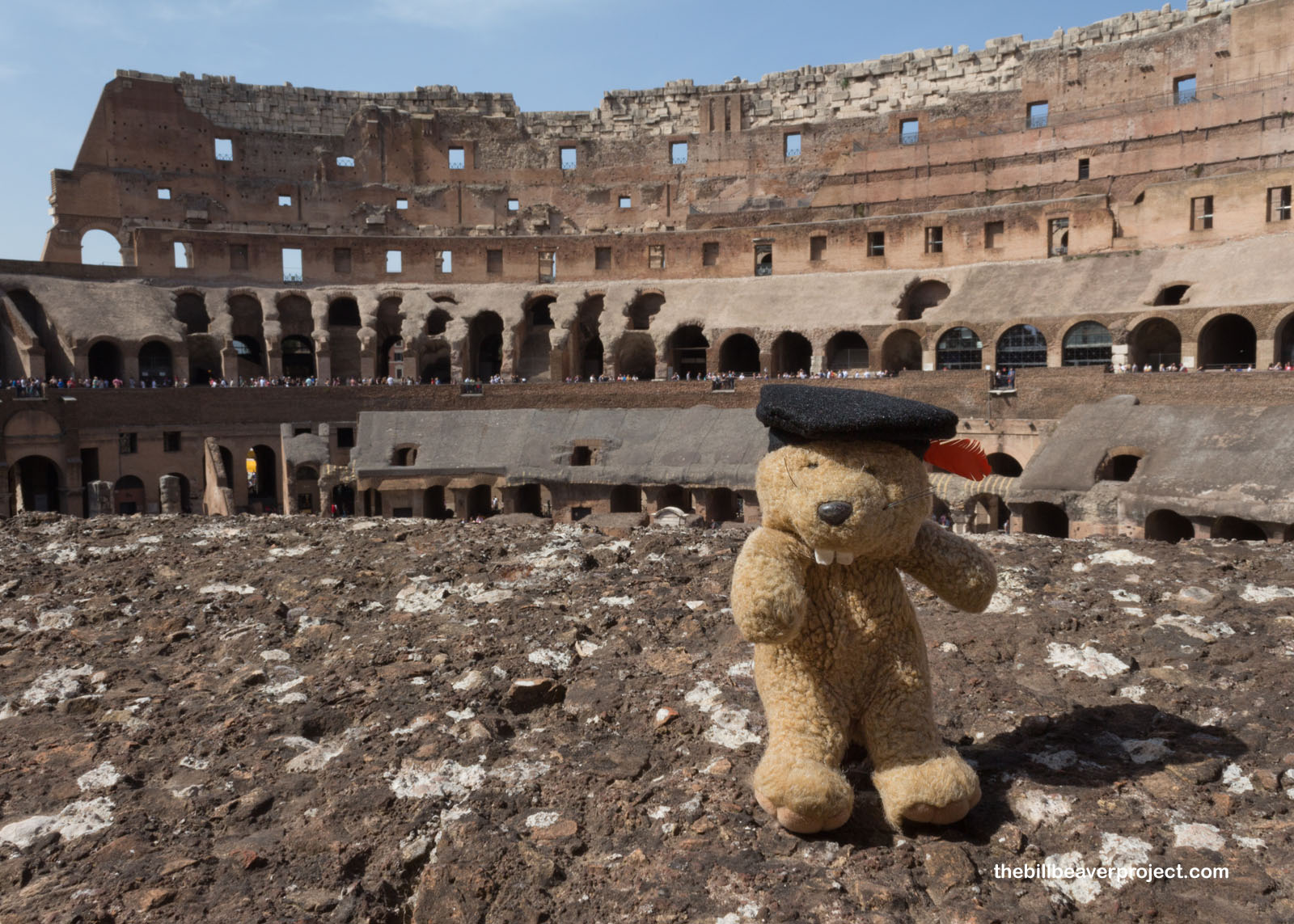 |
On that note, Ursus corrected a common historical misconception: Roman gladiators never fought each other to the death! That’s because they were the superstars of their time, and folks wanted to keep watching them fight. Of course, many of them did eventually die from their injuries, but those that didn’t were allowed to retire, as official Roman citizens, and live out their days in wealth and luxury! Conversely, most of the deaths in the Colosseum were reserved for convicted criminals, who had to fight hungry lions and the like!
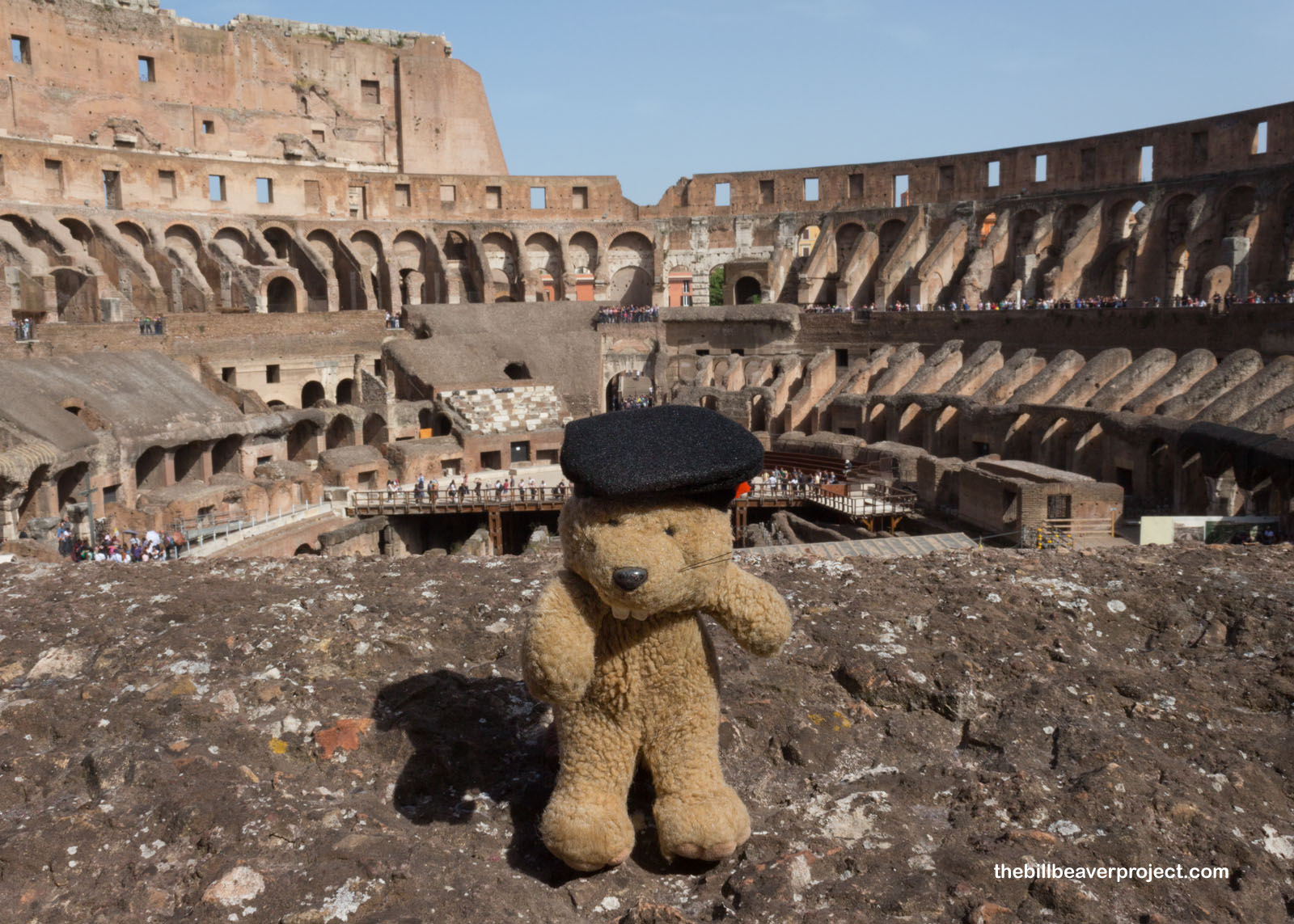 |
The mechanics of the Colosseum were amazing too! There was a complex lift system that would bring fighters and wild animals up from the subterranean holding areas to the main arena. Sometimes, they would even fill the entire Colosseum with water and bring in ships for naval battles! That’s some eye-popping 3D entertainment right there!
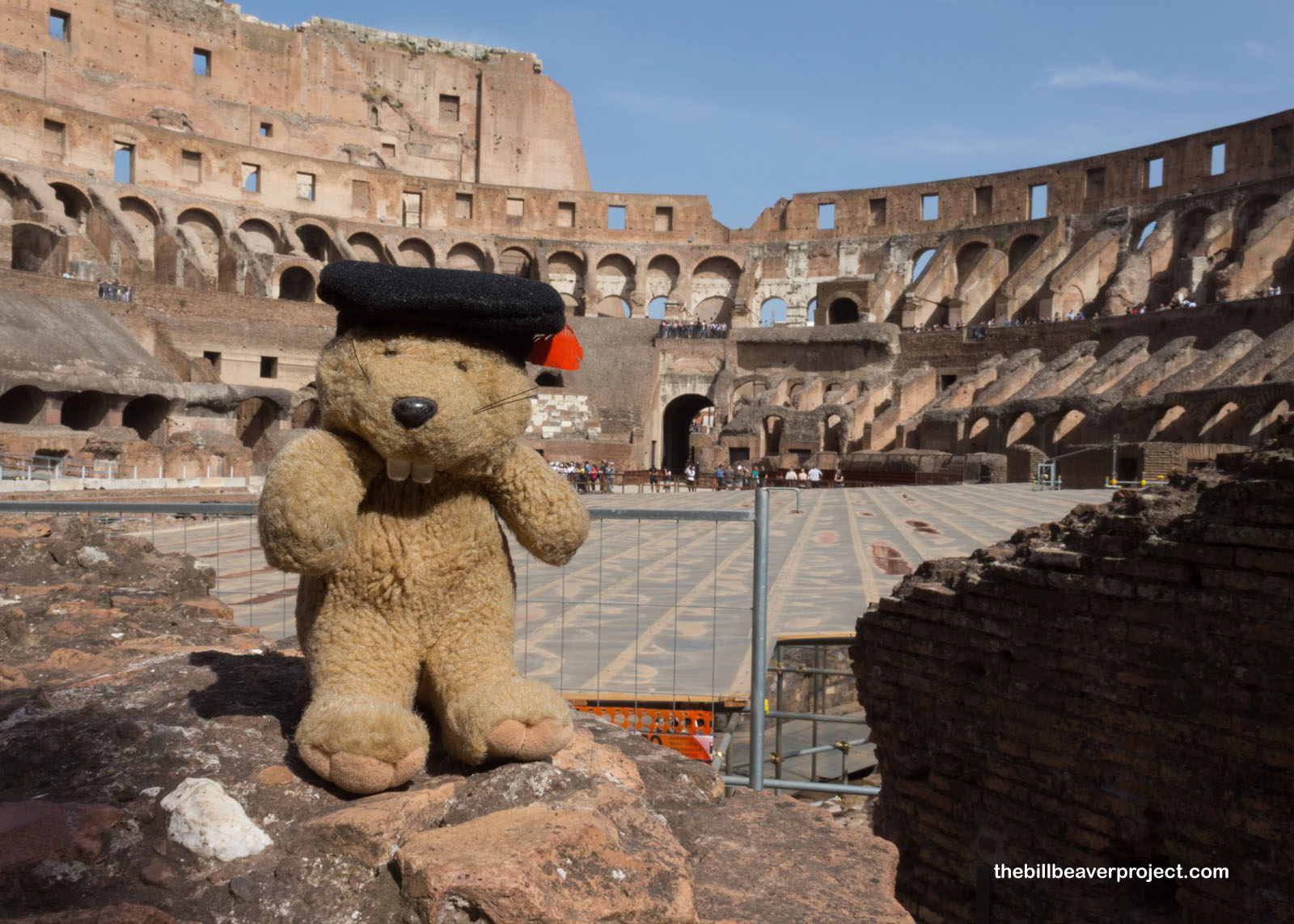 |
Since this was only a 3-hour tour, our visit to the Colosseum was brief, and we were soon whizzing over to the next stop: Palatine Hill! The place that gave us the word “palace,” this was the mythical birthplace of Rome itself, where Romulus built his town on April 21, 753 BC, across from his brother Remus’ town on Aventine Hill! For that reason, this was the preferred real estate for the rulers of Rome!
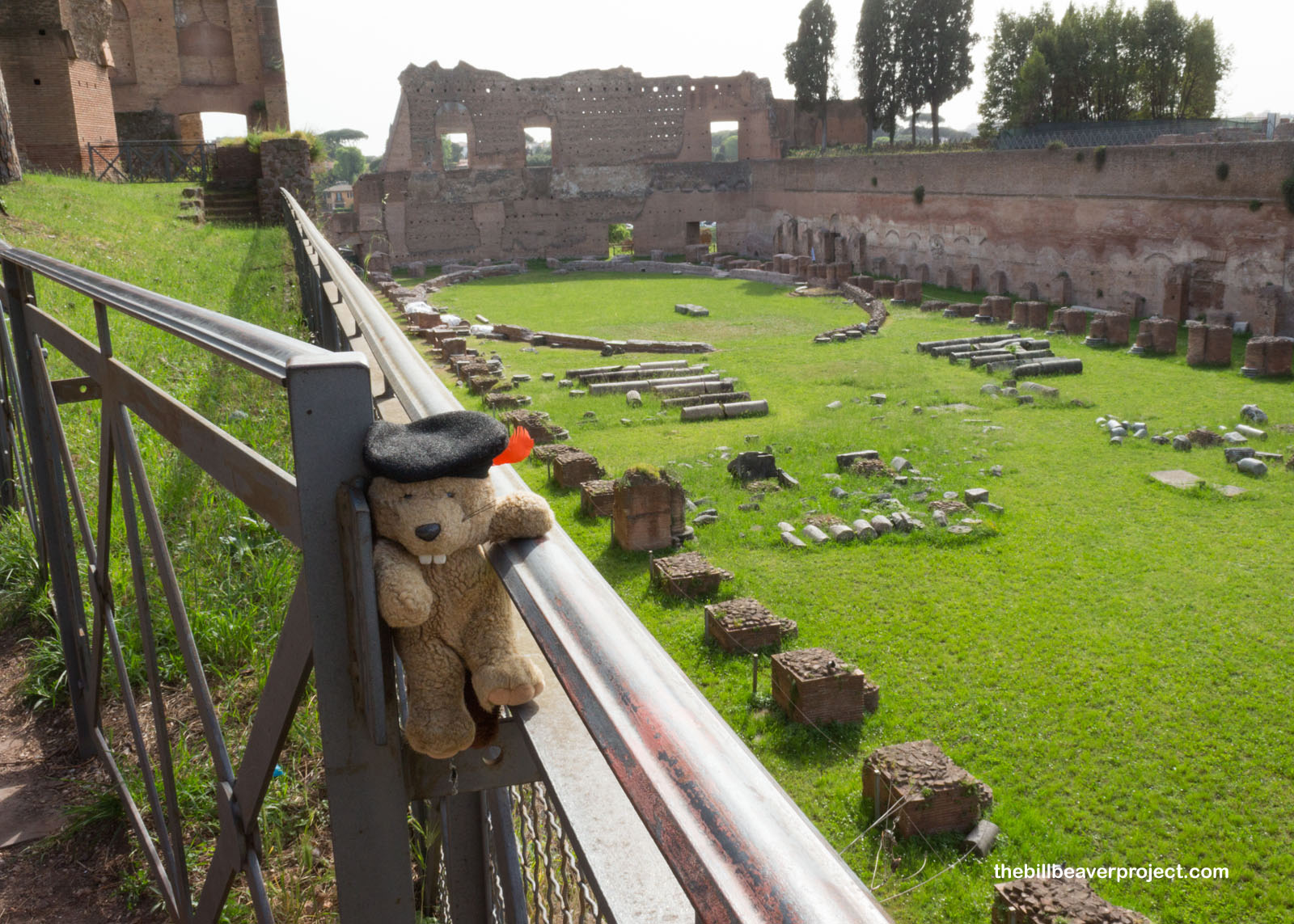 |
There was plenty to do up here on Palatine Hill, like race horses in a small stadium called a Hippodrome, or enjoy the thermal baths set up around it, called the Terme di Massenzio and Terme di Severiano!
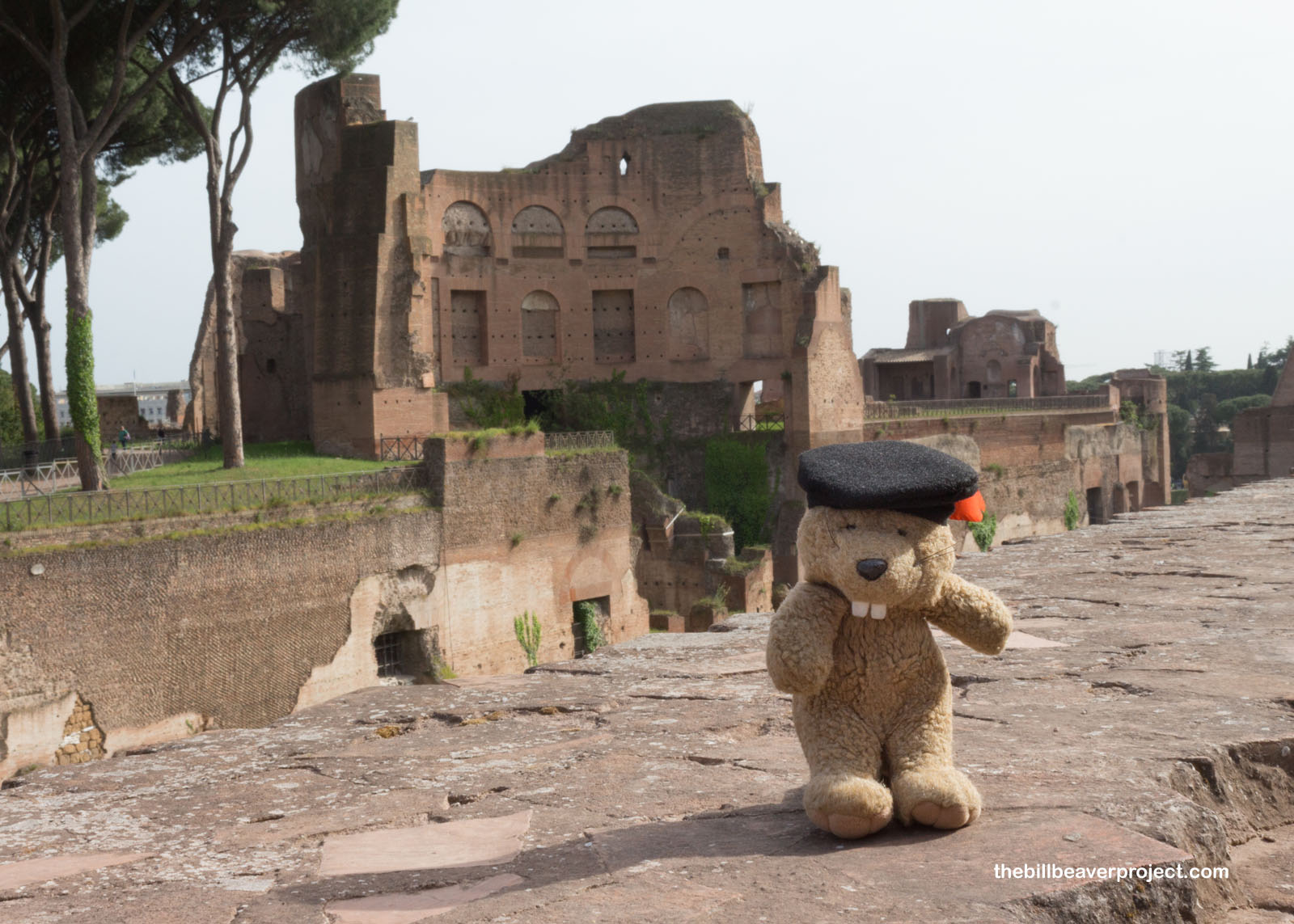 |
From their luxurious baths, the emperors, starting with Severius, could enjoy the hilltop races or get an epic view of the chariots below in the Circus Maximus, a stadium even bigger than the Colosseum, but which is now just a long, grassy indentation!
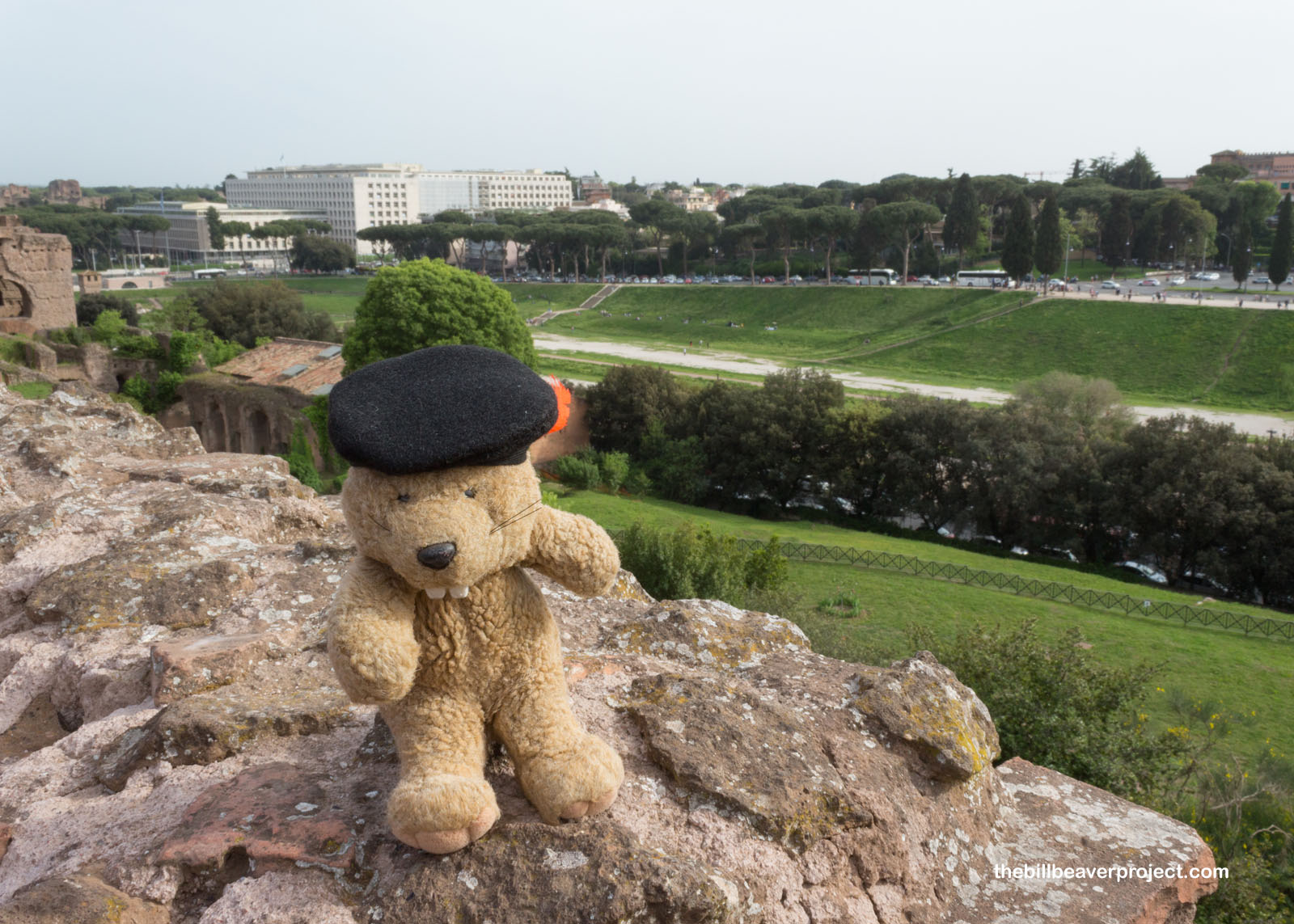 |
At the center of Palatine Hill are the ruins of the Domus Flavia, the vast residential complex of Domitian, the last emperor in the Flavian Dynasty! Here, in his Aula Regia, the emperor would greet his guests with the type of pomp and opulence, said Ursus, that we would expect from the current US President!
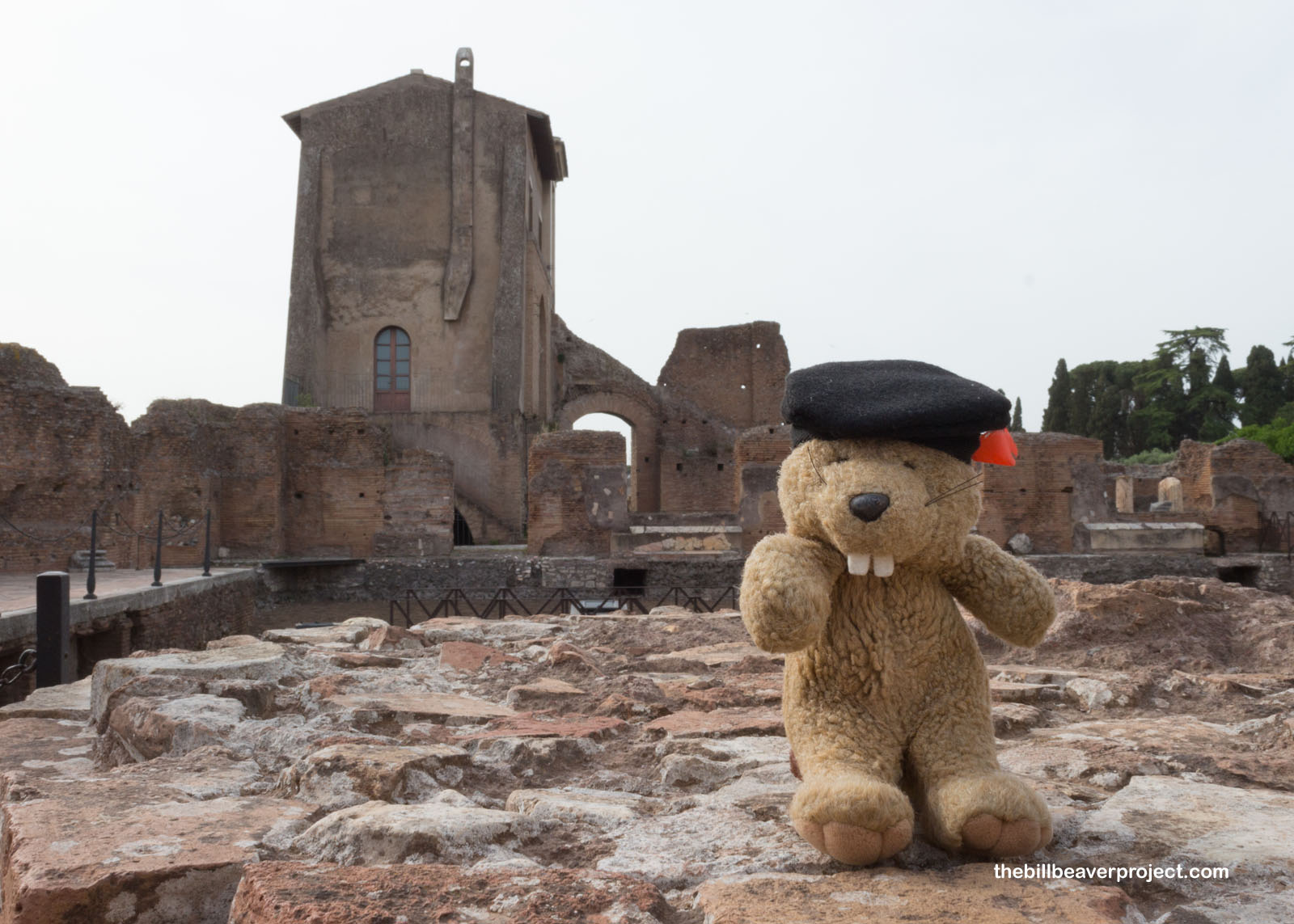 |
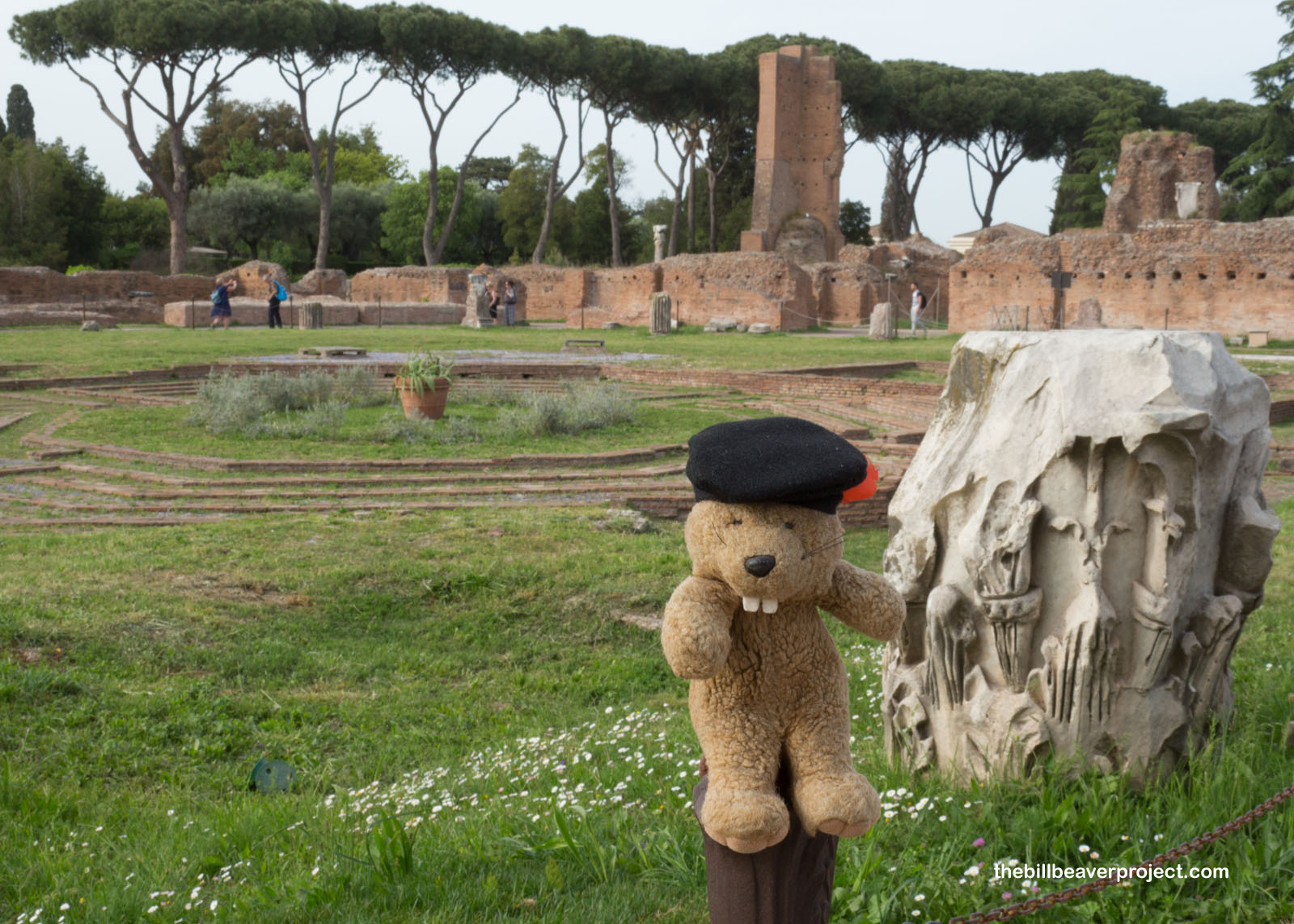 |
The ruins of Domitian’s Palace connected the Palatine Hill to the lower Forum, our next destination after a whirlwind tour of the heights! In the ages before the internet, if anyone wanted the latest news from around the empire, they had to come to the Forum. That’s why we still use the term “forum” for places where we gather for information!
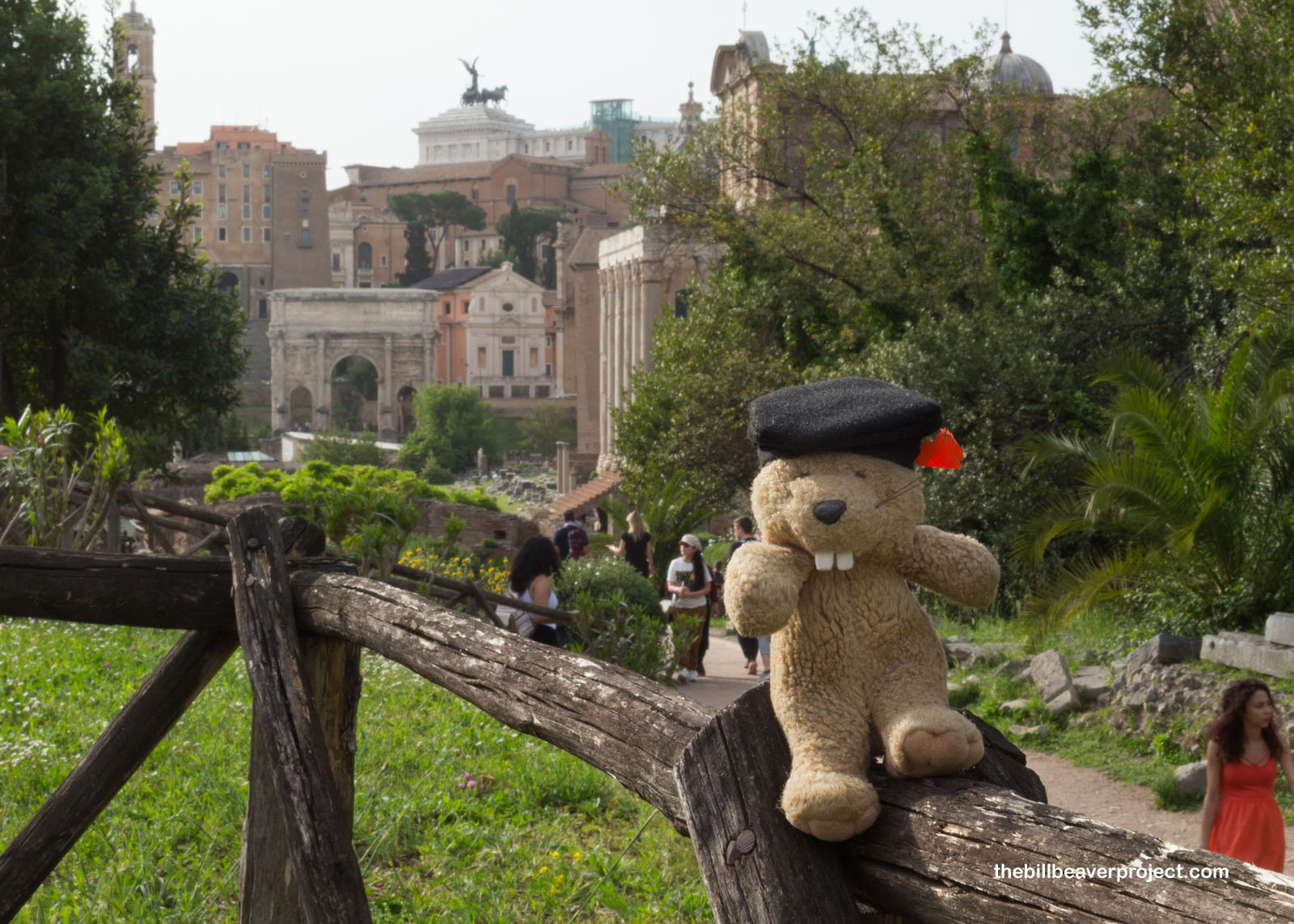 |
Our group filtered in past the Arch of Titus, also built by Domitian to commemorate his father and brother’s victory in the Jewish War of 70-71 BC, the one that gave them the funds for Colossal entertainment! Scenes of the major battles are intricately carved into the marble, describing Titus as a divine emperor!
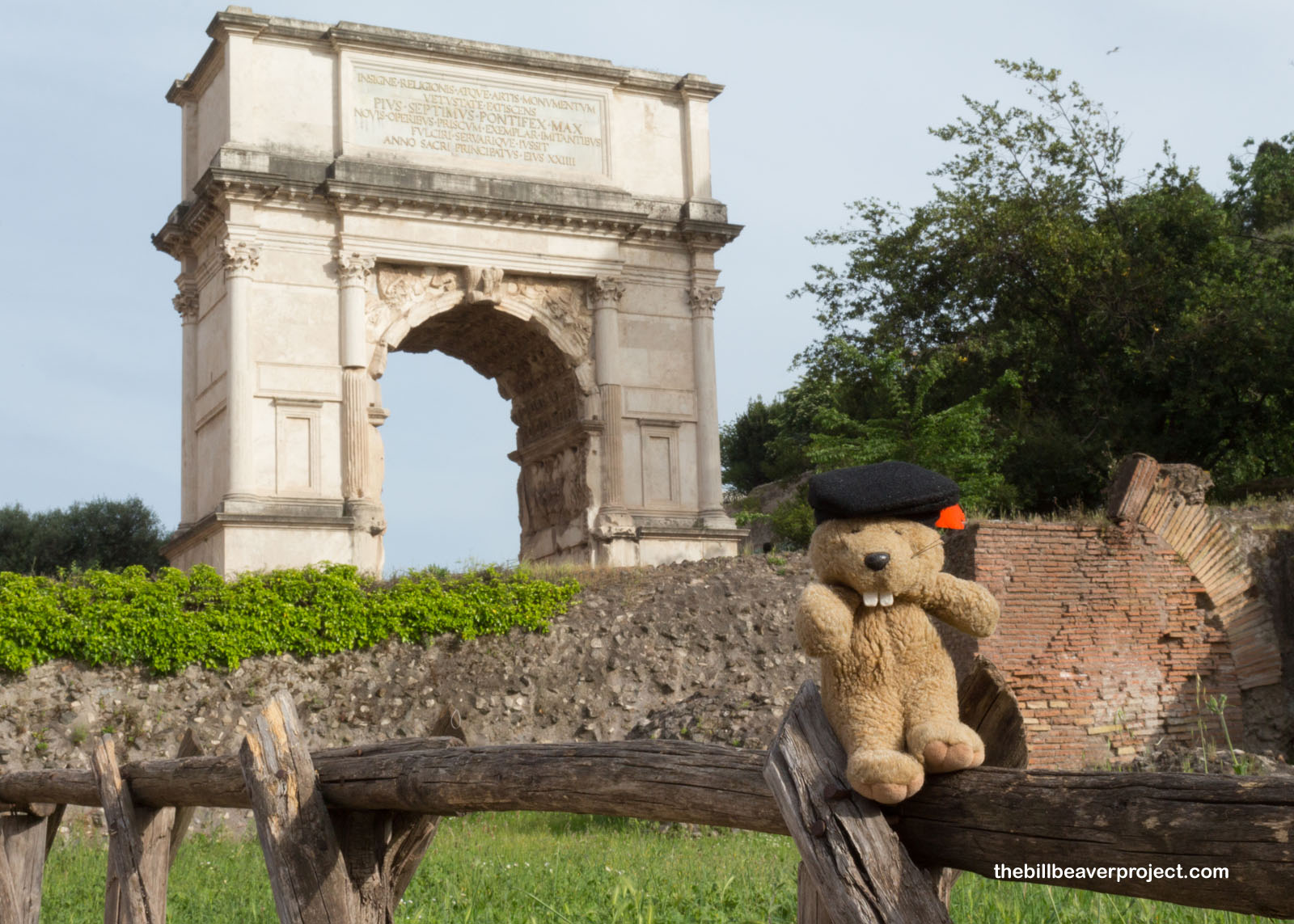 |
Much like today’s forums, divinity was a big topic of discussion here. For instance, we passed the cell where St. Paul waited in prison before his execution by Nero between 64 and 67 AD!
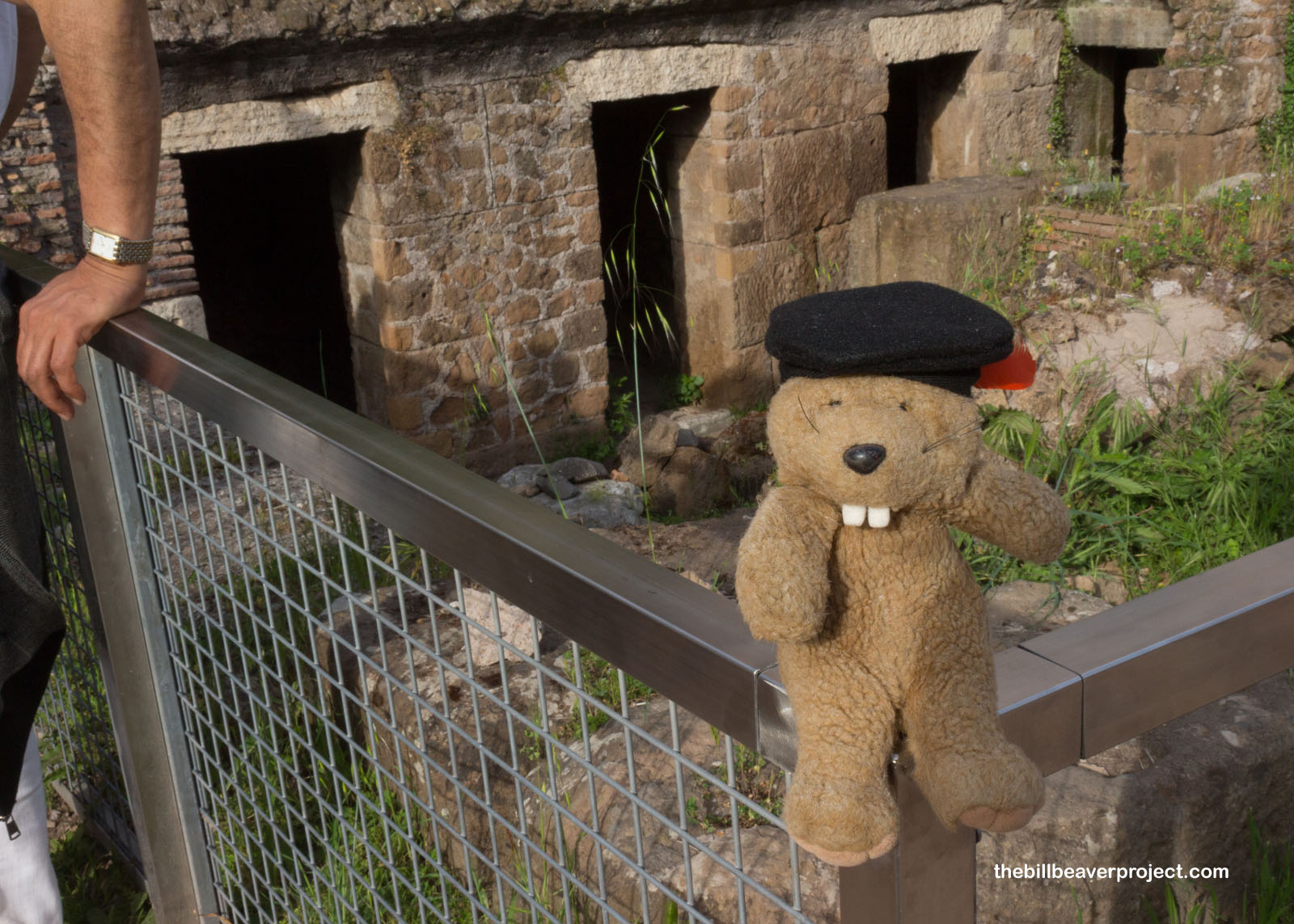 |
This humble cell was right next to an incredible temple built by the Emperor Antoninus Pius in 141 AD for late wife, Faustina, who became a goddess by majority vote in the Senate! Between 1540 and 1602, it was converted into a Baroque church to San Lorenzo, who, like St. Paul, was supposedly martyred nearby. These changes are a major reason why this church has been so well preserved!
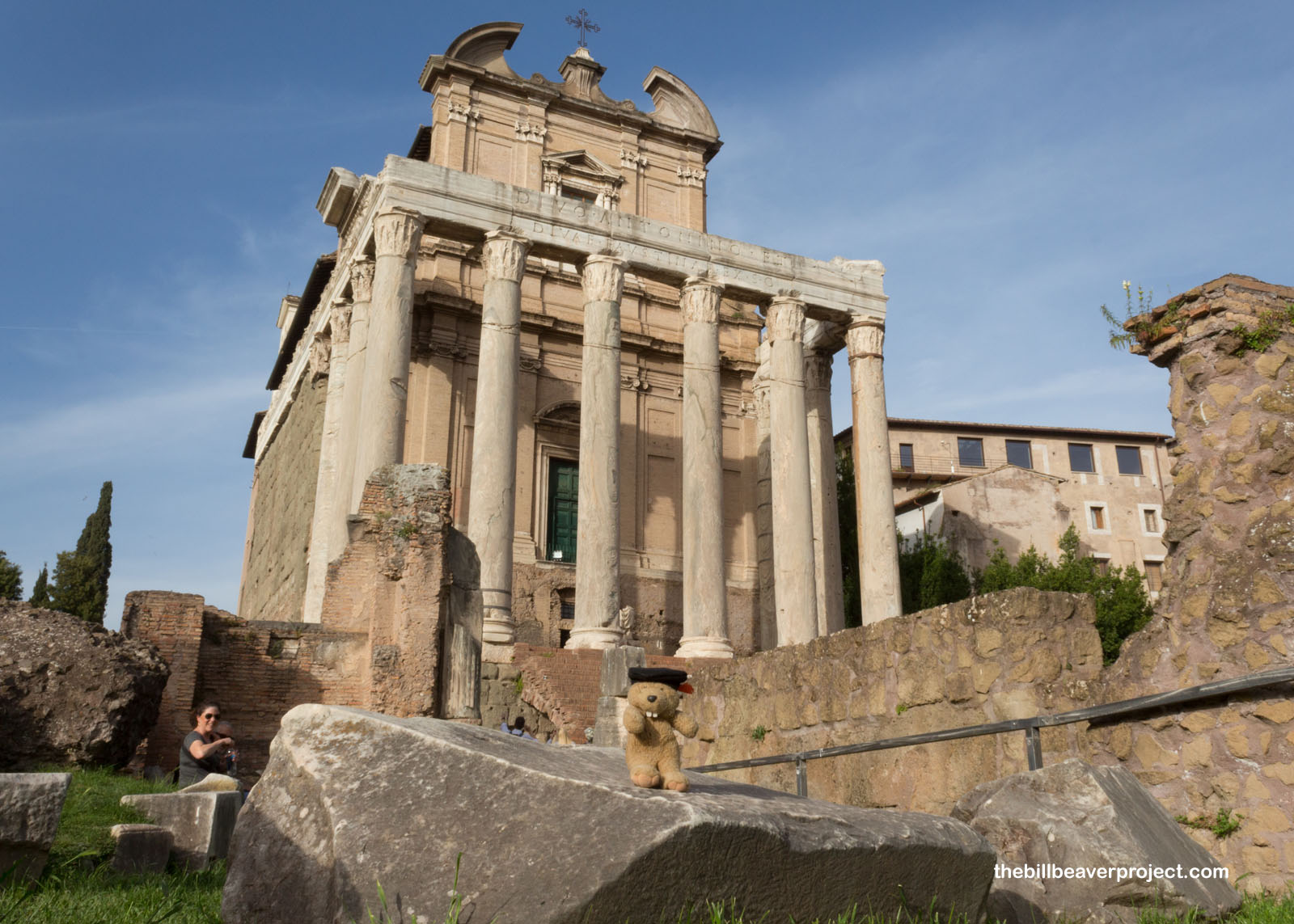 |
Next door, we saw the ruins of the Basilica Aemilia, which wasn’t exactly the type of basilica we’re familiar with today. Built between 210 and 191 BC, this was home to bankers and shopkeepers, named for the architect who completed it: Marcus Aemilius Lepidus!
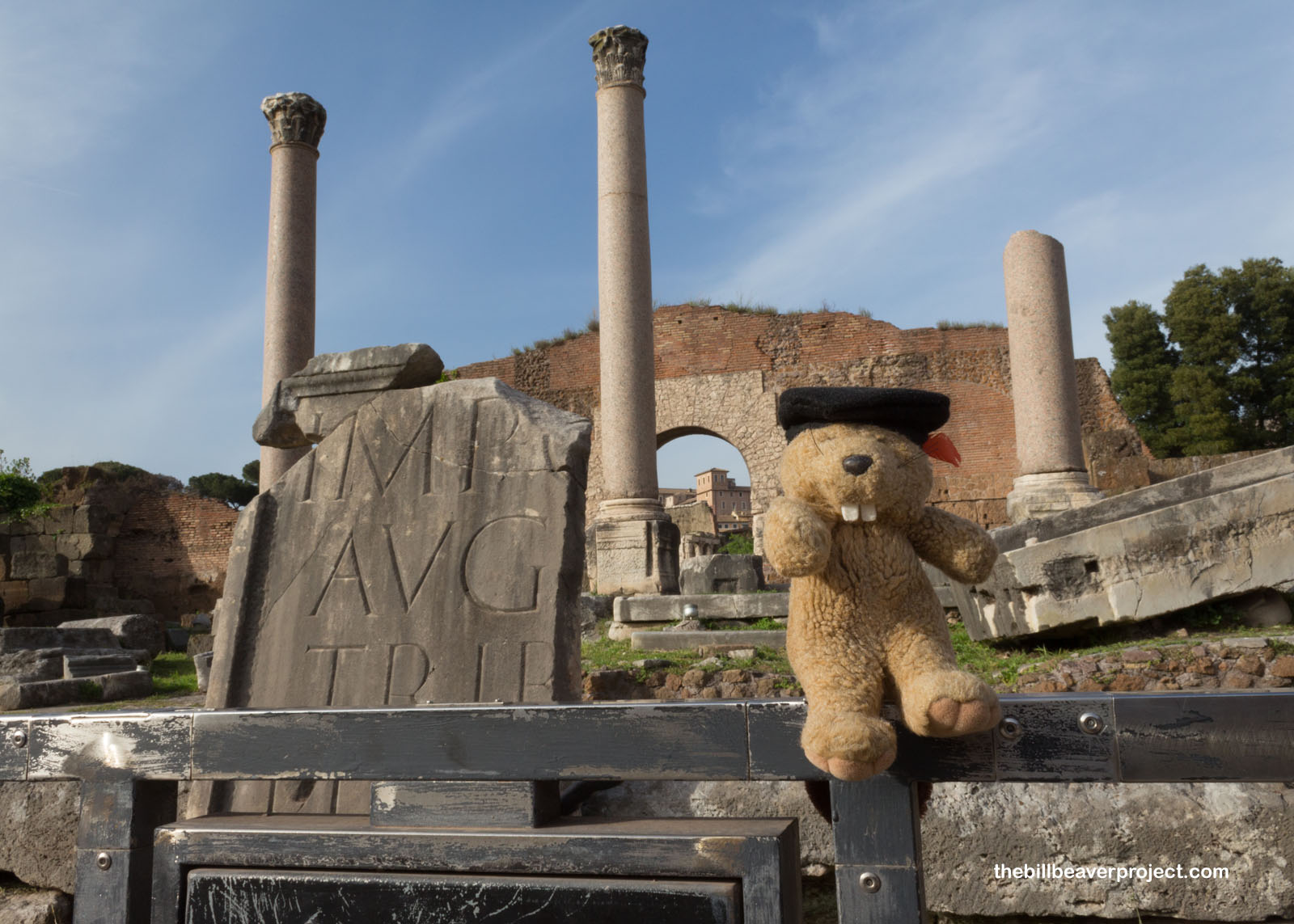 |
We concluded our tour at the ruins of the temple to Julius Caesar, built by the murdered emperor’s adopted son, Augustus in 29 BC after the Senate voted to make Caesar into a god! It was an unusual sort of temple, where folks worshipped the comet that appeared in the sky shortly after Caesar was murdered. Mark Antony was its first priest!
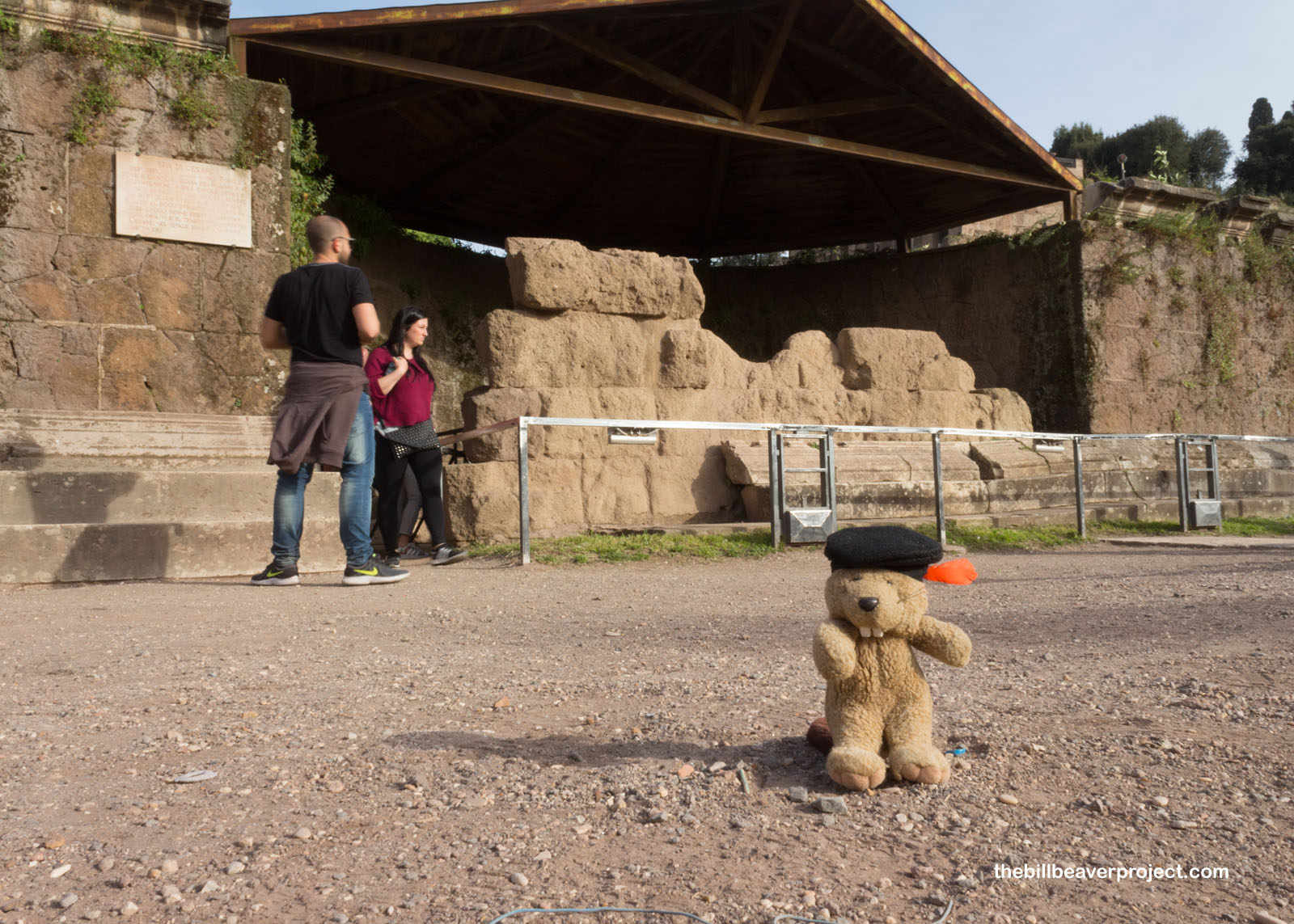 |
On the way out, I had to pause at the remains of a much more ancient temple, built to Castor and Pollux. Built in 495 BC, this temple not only bears the Latin name for “beaver,” but it was also a gesture of thanks to the divine twins of Gemini, who were rumored to have helped the early Roman Republic to victory in the Battle of Lake Regillus!
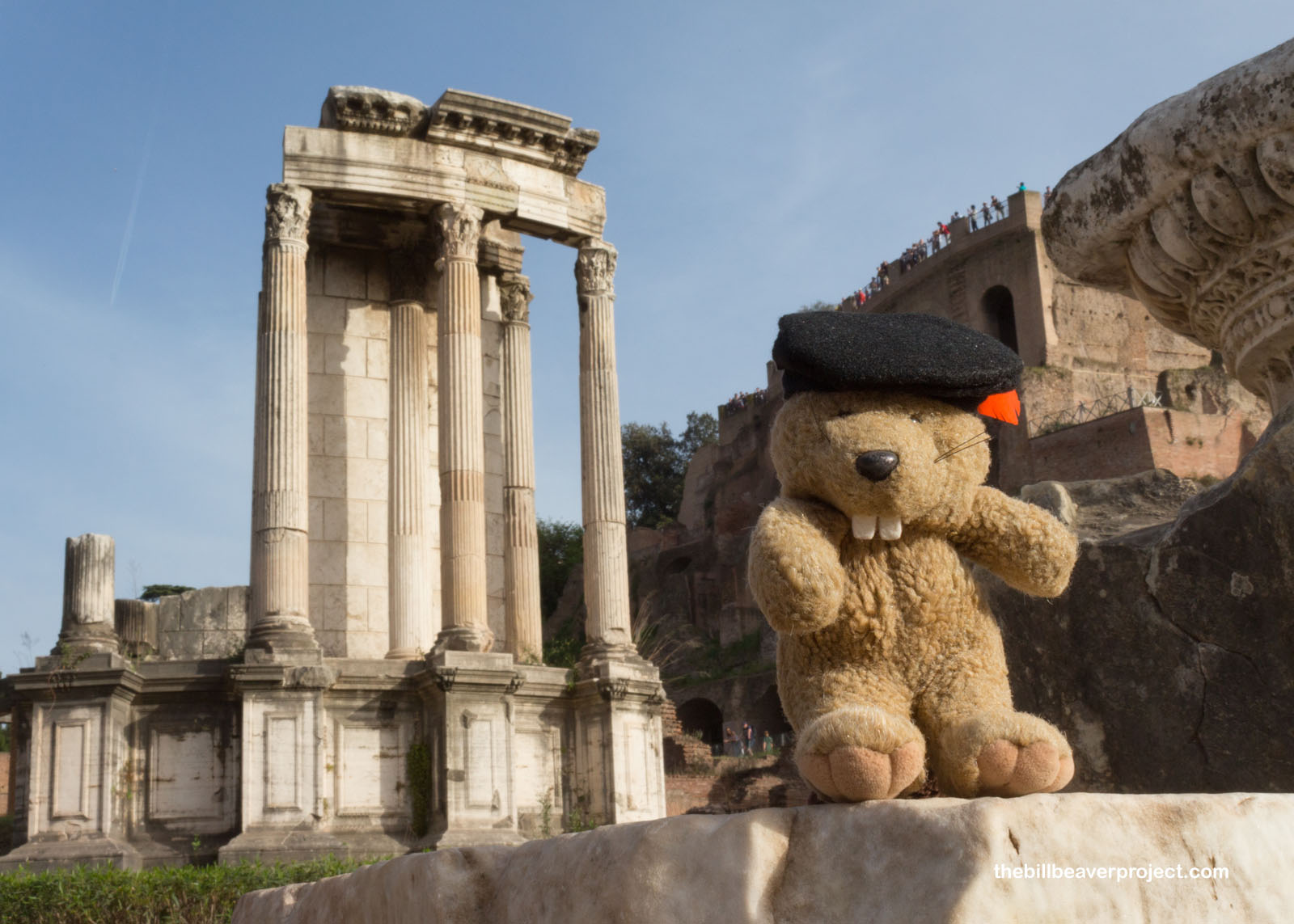 |
Outside the Forum, I met up with my friend, Luca, and his mom, for a little extra sightseeing on the way to dinner. We took a look at the Altare della Patria, a much later monument to Victor Emmanuel II, the first king of a united Italy, which was designed by Giuseppe Sacconi in 1885 and is now a museum! It’s a super controversial monument, not only because many ancient buildings were destroyed on Capitoline Hill to make room for it, but also because Benito Mussolini held a lot of rallies here during World War II! It was an appropriate spot to visit, though, because today, April 25th, is Liberation Day, a celebration of the end of the Nazi occupation of Italy!
 |
We continued our journey to a cheerier spot, and one of the most visited in Rome: the Trevi Fountain! This magnificent fountain was commissioned by Pope Urban VIII in 1629, designed by Nicola Salvi, and completed by Giuseppe Pannini in 1762! It gets its name from its neighborhood, and is part of a popular tradition dating back to 1954: if you toss a coin over your shoulder into the fountain and wish to return to Rome, you will! Supposedly 3,000 euros are thrown into the fountain every day, which are collected and used for programs to help the poor!
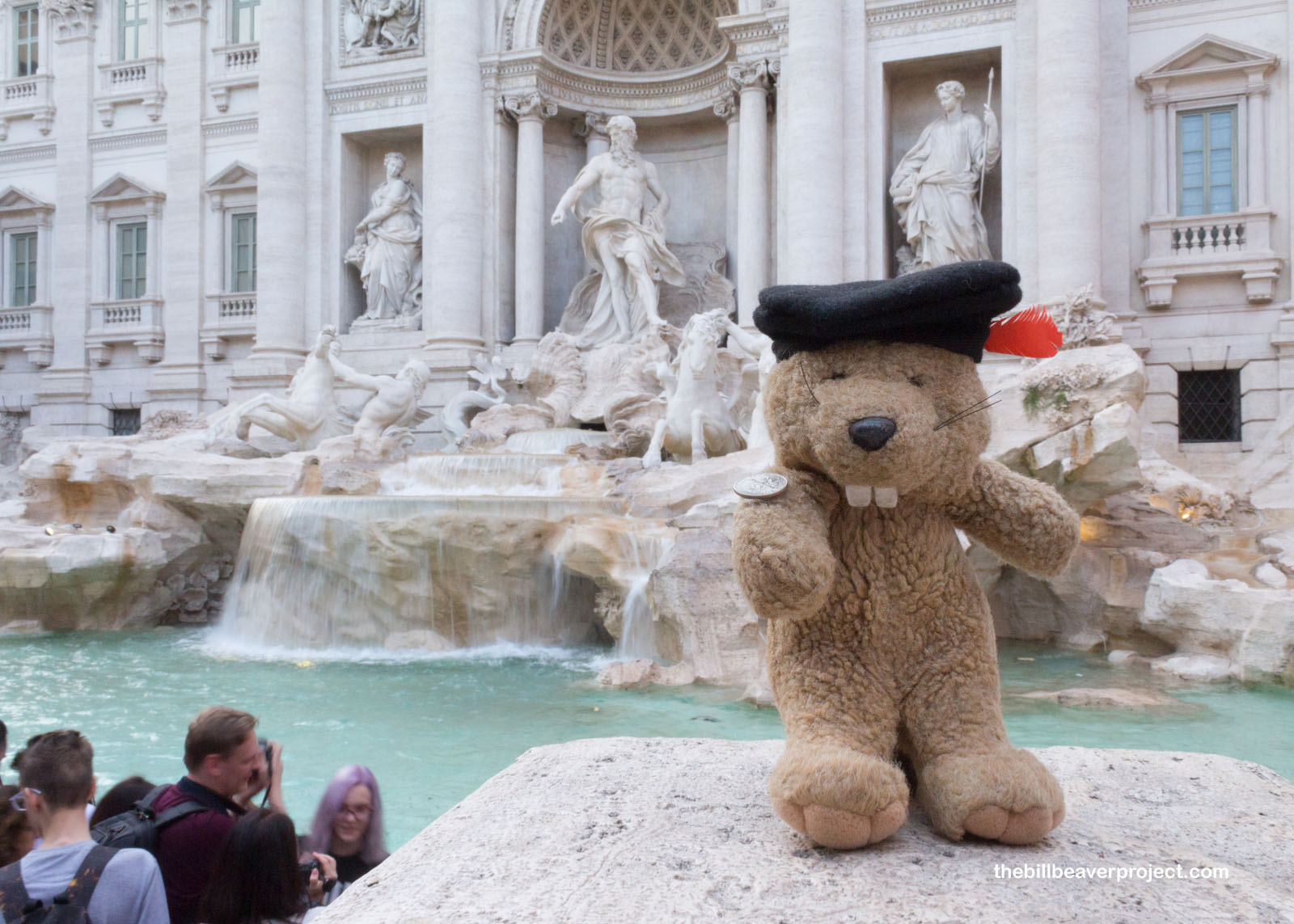 |
Our last stop as the sun set was the Pantheon, a huge Roman Temple and the best preserved structure from that age! Though it burned down twice since 27 BC, the current building, built in 120 AD is still original! That’s because this temple to all the gods (pan “all,” theon “gods”) converted to a church for St. Mary and the Martyrs in 609 AD and has been in constant use ever since!
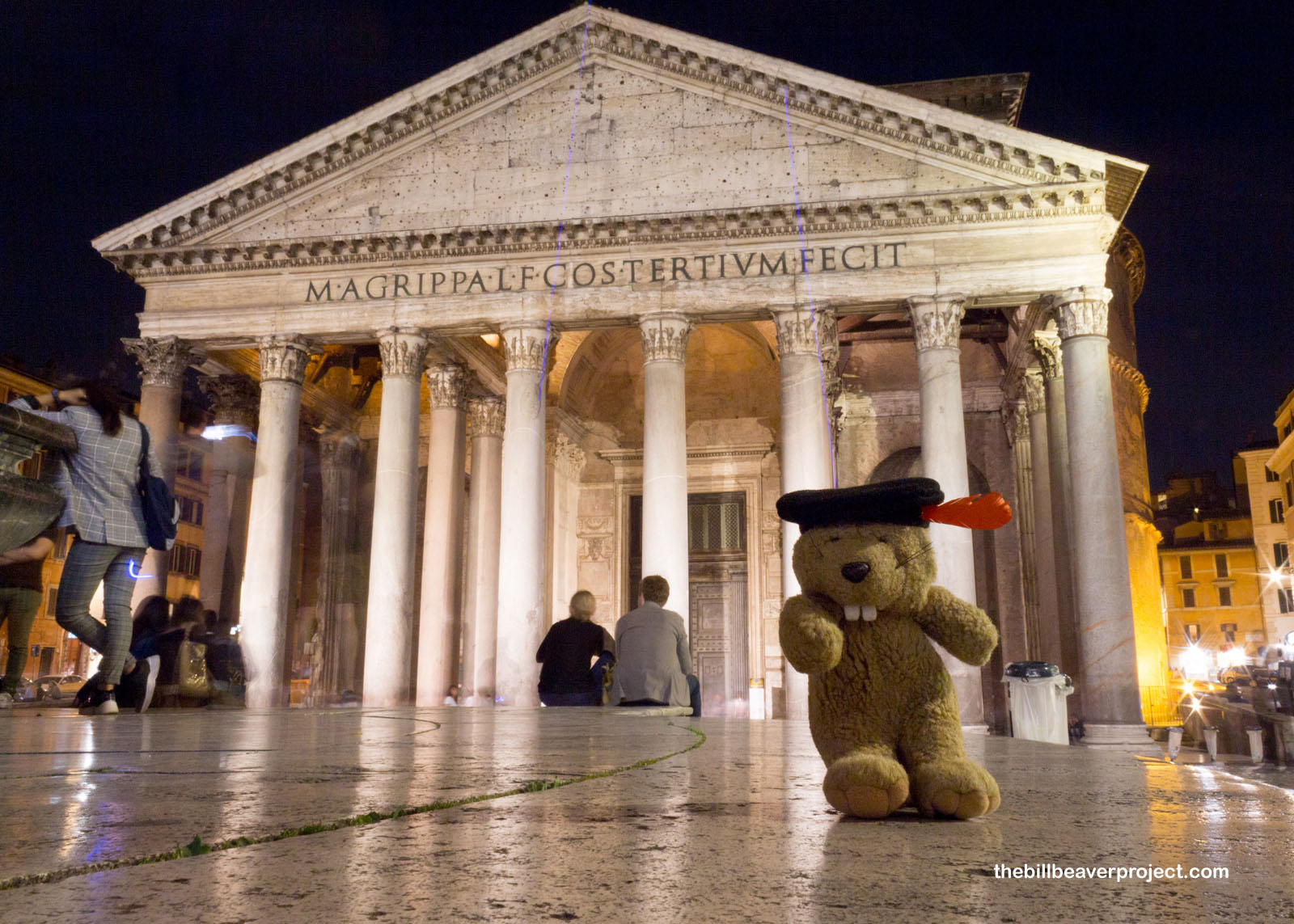 |
Now in the dark, with aching feet and rumbling bellies, it was time to conclude this wild tour of Rome. I hadn’t really eaten much today, so I was very happy when Luca recommended Pizza Forum, just east of the Colosseum. Some huge margherita pizzas finished off with tiramisù put a tasty finish on today’s adventures!
In proximum!

 More 2019 Adventures |
Total Ground Covered: 39.5 mi (63.6 km) |
 Next Day |
